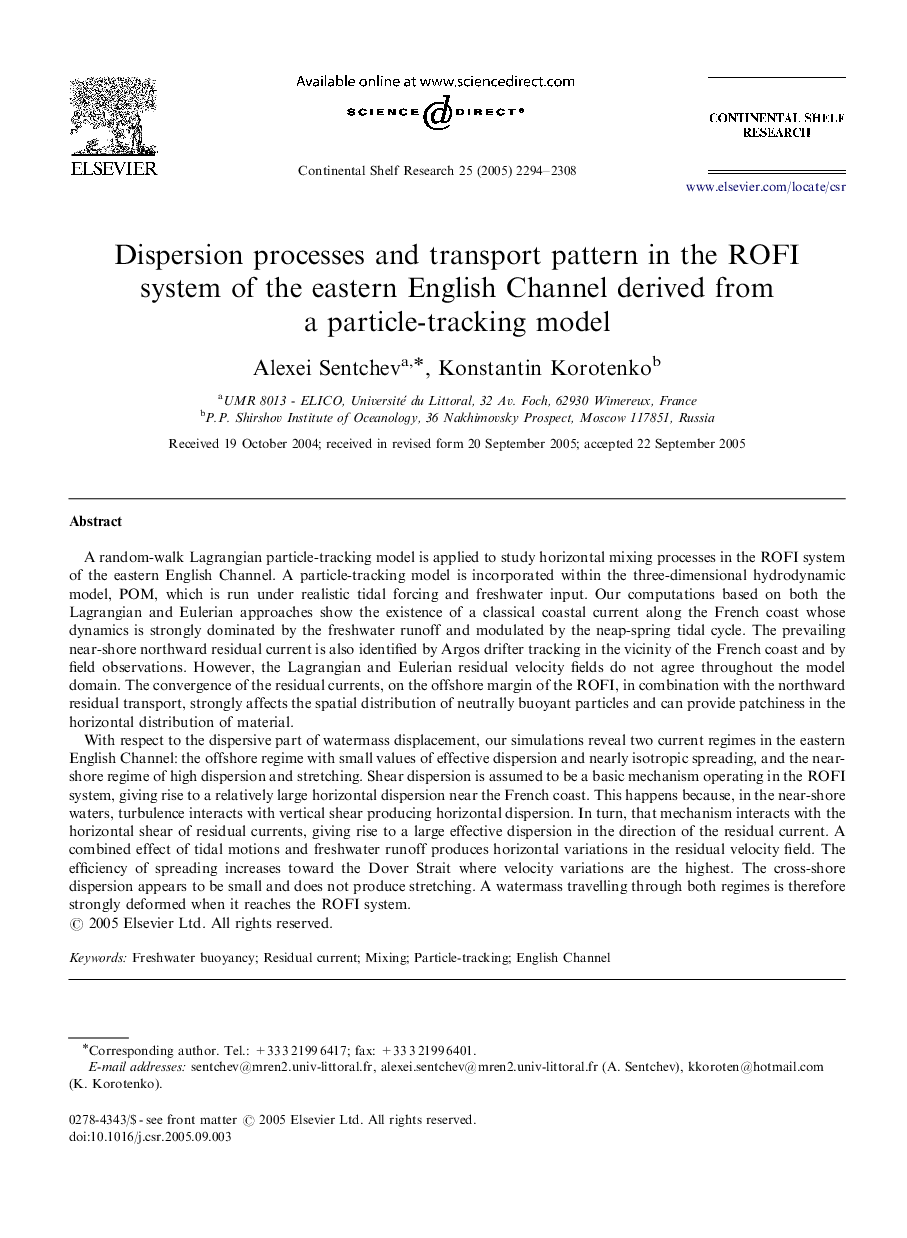| کد مقاله | کد نشریه | سال انتشار | مقاله انگلیسی | نسخه تمام متن |
|---|---|---|---|---|
| 4534150 | 1325263 | 2005 | 15 صفحه PDF | دانلود رایگان |

A random-walk Lagrangian particle-tracking model is applied to study horizontal mixing processes in the ROFI system of the eastern English Channel. A particle-tracking model is incorporated within the three-dimensional hydrodynamic model, POM, which is run under realistic tidal forcing and freshwater input. Our computations based on both the Lagrangian and Eulerian approaches show the existence of a classical coastal current along the French coast whose dynamics is strongly dominated by the freshwater runoff and modulated by the neap-spring tidal cycle. The prevailing near-shore northward residual current is also identified by Argos drifter tracking in the vicinity of the French coast and by field observations. However, the Lagrangian and Eulerian residual velocity fields do not agree throughout the model domain. The convergence of the residual currents, on the offshore margin of the ROFI, in combination with the northward residual transport, strongly affects the spatial distribution of neutrally buoyant particles and can provide patchiness in the horizontal distribution of material.With respect to the dispersive part of watermass displacement, our simulations reveal two current regimes in the eastern English Channel: the offshore regime with small values of effective dispersion and nearly isotropic spreading, and the near-shore regime of high dispersion and stretching. Shear dispersion is assumed to be a basic mechanism operating in the ROFI system, giving rise to a relatively large horizontal dispersion near the French coast. This happens because, in the near-shore waters, turbulence interacts with vertical shear producing horizontal dispersion. In turn, that mechanism interacts with the horizontal shear of residual currents, giving rise to a large effective dispersion in the direction of the residual current. A combined effect of tidal motions and freshwater runoff produces horizontal variations in the residual velocity field. The efficiency of spreading increases toward the Dover Strait where velocity variations are the highest. The cross-shore dispersion appears to be small and does not produce stretching. A watermass travelling through both regimes is therefore strongly deformed when it reaches the ROFI system.
Journal: Continental Shelf Research - Volume 25, Issue 18, November 2005, Pages 2294–2308